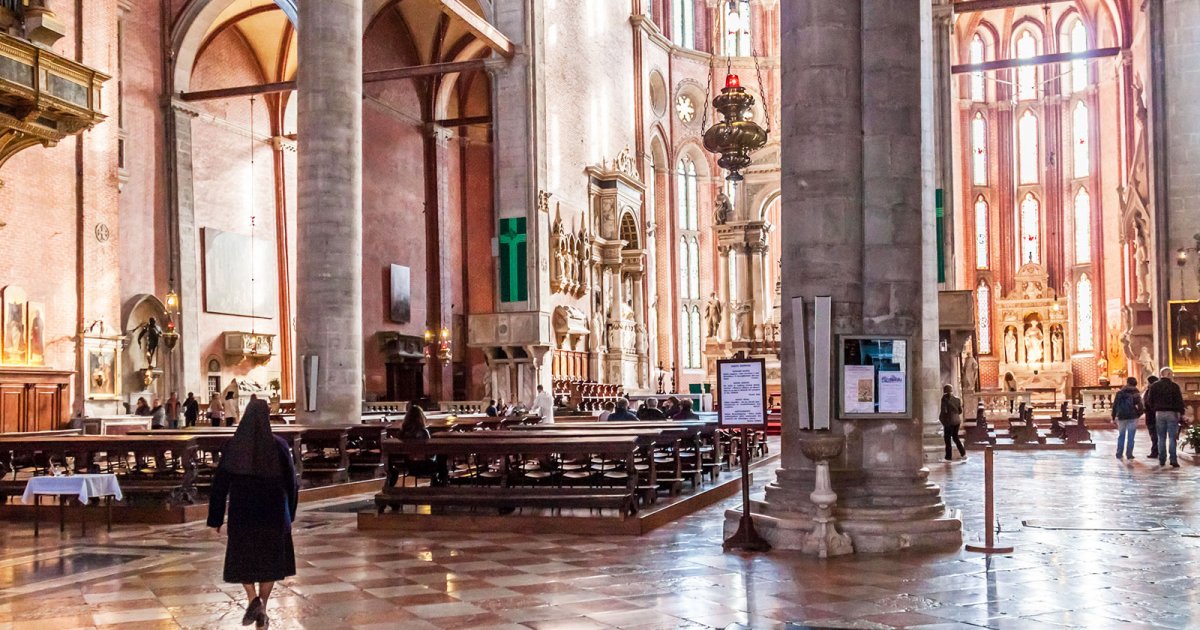SAN ZANIPOLO, Interior
 Language: English / USA
Language: English / USA
The first thing that strikes you as you enter the basilica is the interior's vertical thrust, which is particularly evident in the altar area that's flooded by ultra-pure light from a double row of seven double-arch Gothic windows. Everything in this church is thin and tends to elevation, starting with the incredibly high columns that support the Gothic vaults; between a column and the other, however, the wooden tie rods ensure the large church's stability, even on the yielding lagoon lands of Venice.
Compared to the contemporary and "rival" basilica of Santa Maria Gloriosa dei Frari inspired by Franciscan spirituality and simplicity, here you're struck by majesty and pomp: just think, there are as many as 150 tombs in the floor here and 52 funerary monuments on the walls!
Keep in mind that the large number of tombs has a significant purpose, as the Dominicans were financed by giving rich families the opportunity to be buried in the prestigious basilica in exchange for substantial donations. So it was that over the centuries the church established itself as one of the most appreciated burial sites of the powerful noble families.
Speaking of which, go see one of the most prestigious tombs located at the inner façade of the right nave, which is of Doge Pietro Mocenigo. It is a fifteenth-century masterpiece by the Swiss sculptor and architect Pietro Lombardo, whose family-run workshop was specialized in large funerary monuments. This arched tomb is full of impressive sculptures and is also innovative for the position of the deceased, depicted here standing instead of lying down, and wearing armor as a sign of his military virtues. He gave way to the Venetian Republic's domination on the island of Cyprus: one of the bas-reliefs shows Famagosta handing over the keys to the Venetian noblewoman Caterina Cornaro, who in fact went to marry the King of Cyprus.
FUN FACT: the famous fortress of Famagosta in Cyprus is linked to the tragic story of the protagonist of another tomb, that of commander Marcantonio Bragadin, which is located in the right nave after the first altar. When the Turks besieged and conquered Famagosta, Bragadin was captured and made to suffer excruciating torture: he was flayed alive and his skin was stuffed with straw and publicly exposed for the mockery of the winners.



